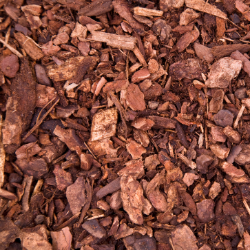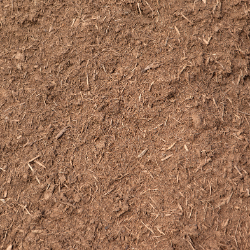Landscaping in Florida has a slow season and a grow season. Focus slow season attention on tasks aimed at preventing issues that will emerge in the grow season. I am talking about weed control! Weed integrated pest management should be aimed at prevention, both physical and chemical.
Add mulch in beds and pathways, and apply pre-emergent herbicides by mid-February where needed.

Mulch
Mulch in landscape beds and pathways. A depth of approximately 2-3 inches offers a balance of weed and moisture control. A natural or organic mulch such as pine bark or pine straw provides greater benefits than inorganic rocks and pebbles. Chonky, coarse textured, mulch has prevented more weeds from germinating than fine-textured mulches in research trials. The big honkin’ chonks of mulch block light and dry out faster, so it is harder for weeds to grow in them!
Keep a couple inches of space between the stems and trunks of landscape plants and the mulch line. Plants do not like mulch turtlenecks, and they absolutely hate mulch volcanoes.
Mulch provides numerous benefits in the landscape. It is attractive, distinguishes plant beds from turf areas, prevents weeds, regulates moisture levels, and will break down over time, enriching the soil with bits of organic matter, thus returning carbon to the soil. Little things like using mulch as opposed to rocks help our changing climate situation, too!

Pre-emergent Herbicides
Pre-emergent herbicides PREVENT WEED SEEDS FROM GERMINATING! Application timing is everything! Weeds never really stop growing in Florida, but they do have two distinct seasons. The pre-emergent herbicide program will focus on preventing the incoming seasonal weeds from growing. To prevent warm season weeds from seeing the light of day, apply pre-emergence herbicides by mid-February, or when daytime temperatures reach 65-70 degrees for 4-5 consecutive days. If the seeds germinate, the critical application timing window was missed. Weed and feeds, herbicide and fertilizer mixtures, are not formulated for Florida’s seasons specifically. The weeds must get treated before they germinate. Fertilizers feed plants while they are actively growing, and February is still a little sleepy in the garden. It is best to separate herbicide treatments and fertilizer applications. If you control weeds, pre-emergent herbicides are your friend and are the basis of a strong weed management program!
Weed Seed Bank
When thinking about weed control, remember weed biology. Develop a plan aimed at reducing the total weed seeds in the “bank” because then fewer weeds have the opportunity to grow. Weeds are amazing little survivors that reproduce like crazy! Weed control can be improved by preventing weeds from reproducing. Weeds have different strategies to replicate themselves, so many strategies that it is worth an entire class! To keep it simple, let’s talk about flowers and seeds. The weed will grow, push flowers, get pollinated, and go to seed.
- Prevent weeds from going to flower. Regular mowing, hand pulling, spot treatment, selective herbicide application effective.
- Prevent weed seeds from germinating.
- Mechanical – till weed seeds to surface, allow to germinate, and till back under as small seedling, repeat
- Chemical – pre emergent herbicide application in February and November
More information
https://edis.ifas.ufl.edu/ep141
https://edis.ifas.ufl.edu/ep464
https://edis.ifas.ufl.edu/ep523
 1
1
